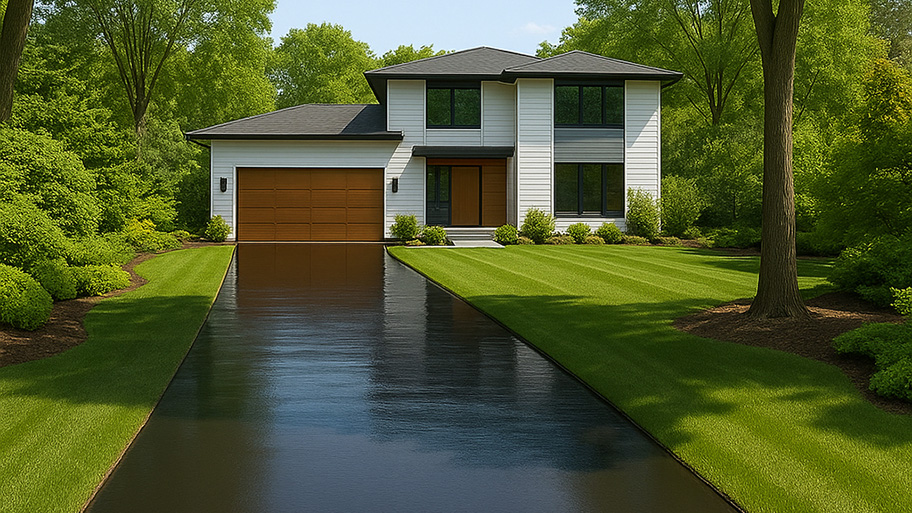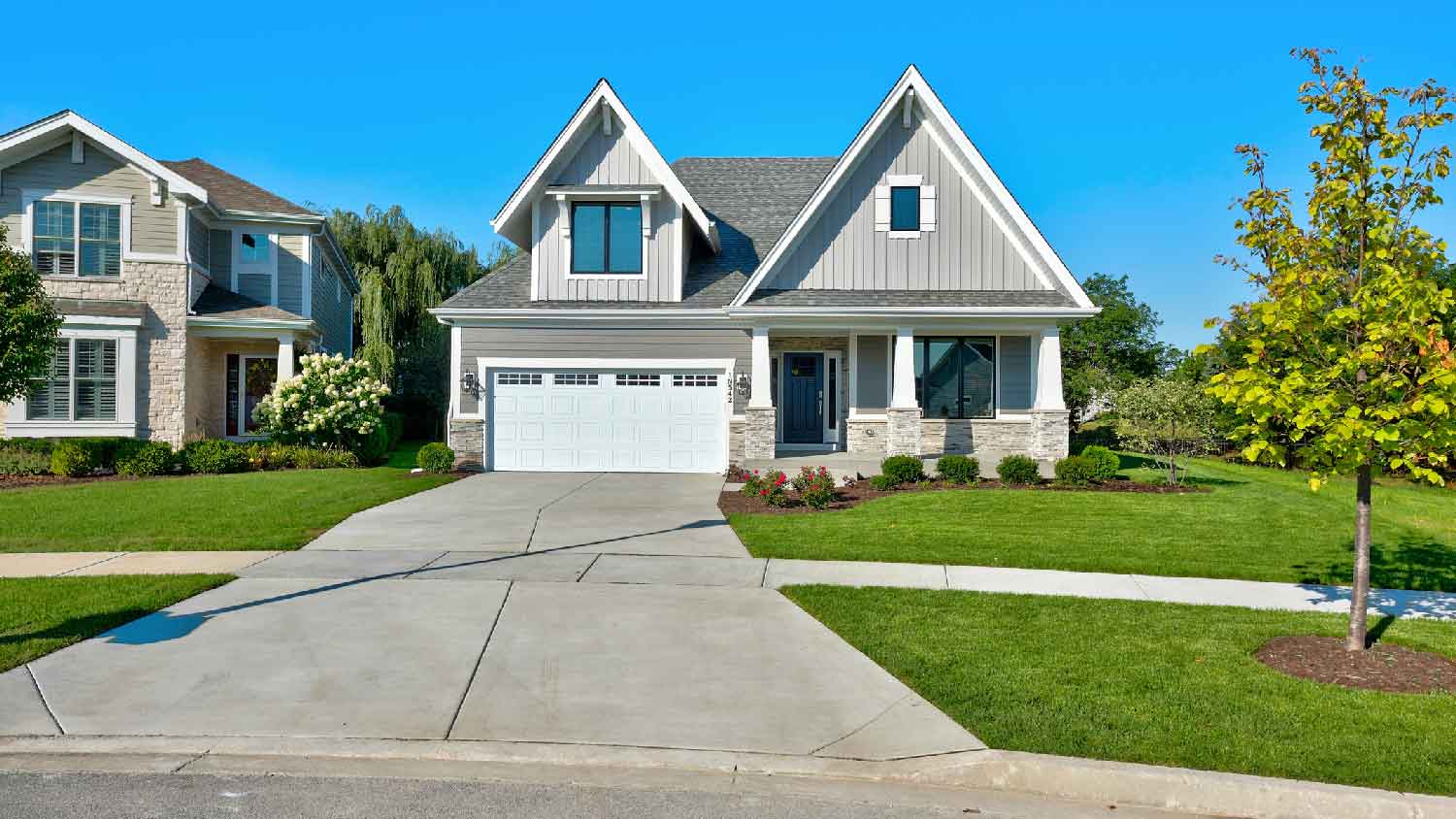
The cost to build a road on your property can be high, but the utility is often worth it. Use this cost guide to see how much this project will cost.
Where there’s a will, there’s a way


Walkways and pathways are for foot traffic.
Driveways and roadways are for car traffic.
A roadway is often public, but some homeowners do have private roads.
Most municipalities will have strict codes for building any of these thoroughfares.
The etymology for the word “way” comes from the Old German weg, which means “to move” or “to carry.” Pathways, walkways, driveways, and roadways do just that—they help facilitate the movement of people, cars, or other vehicles (such as bicycles). But despite having the same root word, these thoroughfares can be strikingly different in their application, materials, cost, and more.
Here are the basic differences between driveways and roadways: driveways are a type of road leading to the front door of a home or business. They can be either unpaved or paved and are not usually meant for significant car traffic but are often used as a place to park cars. Roadways, on the other hand, are public thoroughfares used for heavy vehicle traffic.
Walkways are paths for foot traffic, often designed to lead people from one place to another—one example would be a walkway leading from your back patio door to a barbeque area or outdoor seating spot. They are similar but usually less formal, with gravel or mulch as their base. Pathways also often invite quiet meandering around a landscaped area rather than a direct route from one place to another.
| Type of Difference | Pathway | Walkway | Driveway | Roadway |
|---|---|---|---|---|
| Primary Use | A designed route within a garden or other idyllic space intended for casual meandering | A safe, stable route for pedestrians to get from one place to another | Road leading to a location’s entrance | Heavy vehicular traffic |
| Common materials | Mulch, gravel, brick, stepping stones, pavers | Brick, concrete, flagstone, gravel, pavers | Asphalt, concrete, gravel, brick, or cement | Asphalt and concrete |
| Average Cost | $1–$20 per square foot | $10 per square foot | $2–$15 per square foot | $15 per square foot |

The core differences between these thoroughfares are their uses.
Pathways are used by pedestrians but often aren’t planned to transport people from one place to another; instead, they are landscaping features that allow homeowners and visitors to explore a garden or other area at leisure.
Walkways are used by pedestrians and are usually designed with safety and accessibility in mind, which is why they typically use hard materials such as concrete or brick. These thoroughfares are used for people to move safely from point A to point B.
Driveways are areas where vehicles can pull up to the front entrance of a home or business. Sometimes, cars are parked on driveways, but they are not intended for heavy vehicular traffic.
Roadways are usually public, though there are some private roadways and easements—these are long thoroughfares for heavy vehicular traffic.
Driveways will have specific size restrictions, as dictated by your local municipality. Usually, residential driveways are between 12 and 24 feet wide, and up to 40 feet long. Commercial driveways might have more lenient restrictions—local codes will have all the details; you can also contact a reputable, local driveway paving company to help. Roadways, on the other hand, can often exceed 40-feet in length as they are used to accommodate car traffic—private roadways, should you wish to build one, will also have specific codes and regulations attached to them, dictating their size, use, and maintenance. Some homeowners, for instance, have roadway easements—these are usually private roads that a homeowner might grant for public use if their road is the only way in or out of an area. Private roads and roadway easements are most common in rural areas.
The length and width of a walkway or pathway are usually limited only by your budget, landscaping, and the size of your property, but it’s essential that you consult with a local landscaping professional who understands the dimensions that make walkways and pathways safe and accessible.
While many of these thoroughfares can use the same materials, it’s typical to see roadways made from asphalt or concrete as these materials can accommodate the heavier load of car traffic. Driveways also need strong materials, but they don’t need to absorb as much weight—you often find driveways made from gravel, for those who need an economical option. Walkways can be made from any material, but most homeowners prefer solid options such as brick or pavers for safety reasons. Pathways are similar, and sometimes to blend in with landscaping design, homeowners opt for more natural materials such as mulch, though it’s not unusual to choose from one of the many stepping stone designs.
Ultimately, the cost will depend on the size and materials used, whether you’re building a roadway, pathway, or driveway. That said, roadways are the most expensive of these thoroughfares, as they typically need to be much wider than other thoroughfares, per state and city guidelines.
From average costs to expert advice, get all the answers you need to get your job done.

The cost to build a road on your property can be high, but the utility is often worth it. Use this cost guide to see how much this project will cost.

When designing a driveway, it's crucial to know the cost of your driveway apron—the transitional ramp that connects you to the road. Here's what to know.

Don’t knock it until you try it. A heated driveway can save you a lot of manual labor in colder months. Here’s a breakdown of the cost of a heated driveway.

Choosing the right asphalt is key to a long-lasting surface. Find out which mix works best for roads, driveways, and heavy-traffic areas.

You can use boiling water, vinegar, commercial moss killers, and more to remove moss from driveways. Learn how to get rid of moss on driveways in this guide.

Building a driveway requires measuring, excavating, and building a stable foundation. Follow these steps to learn about the process.